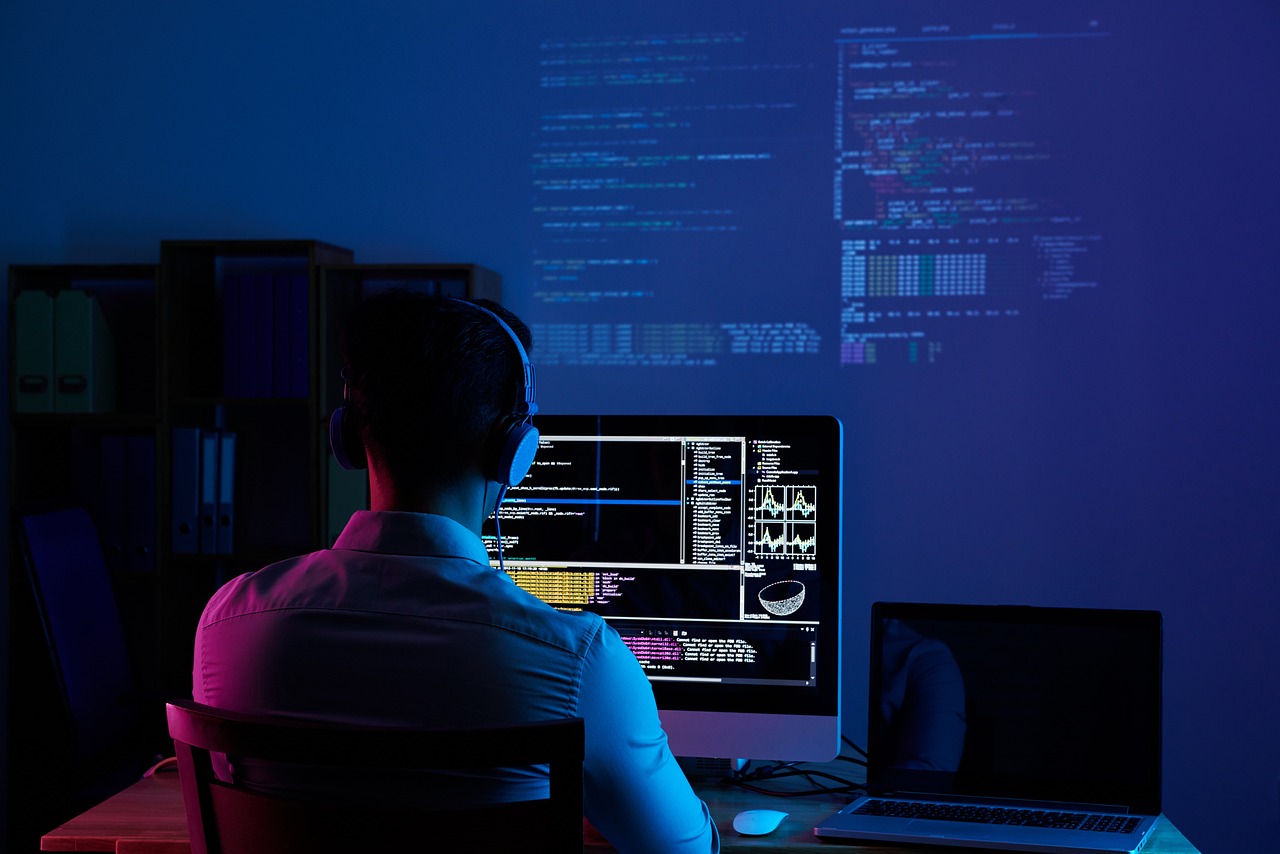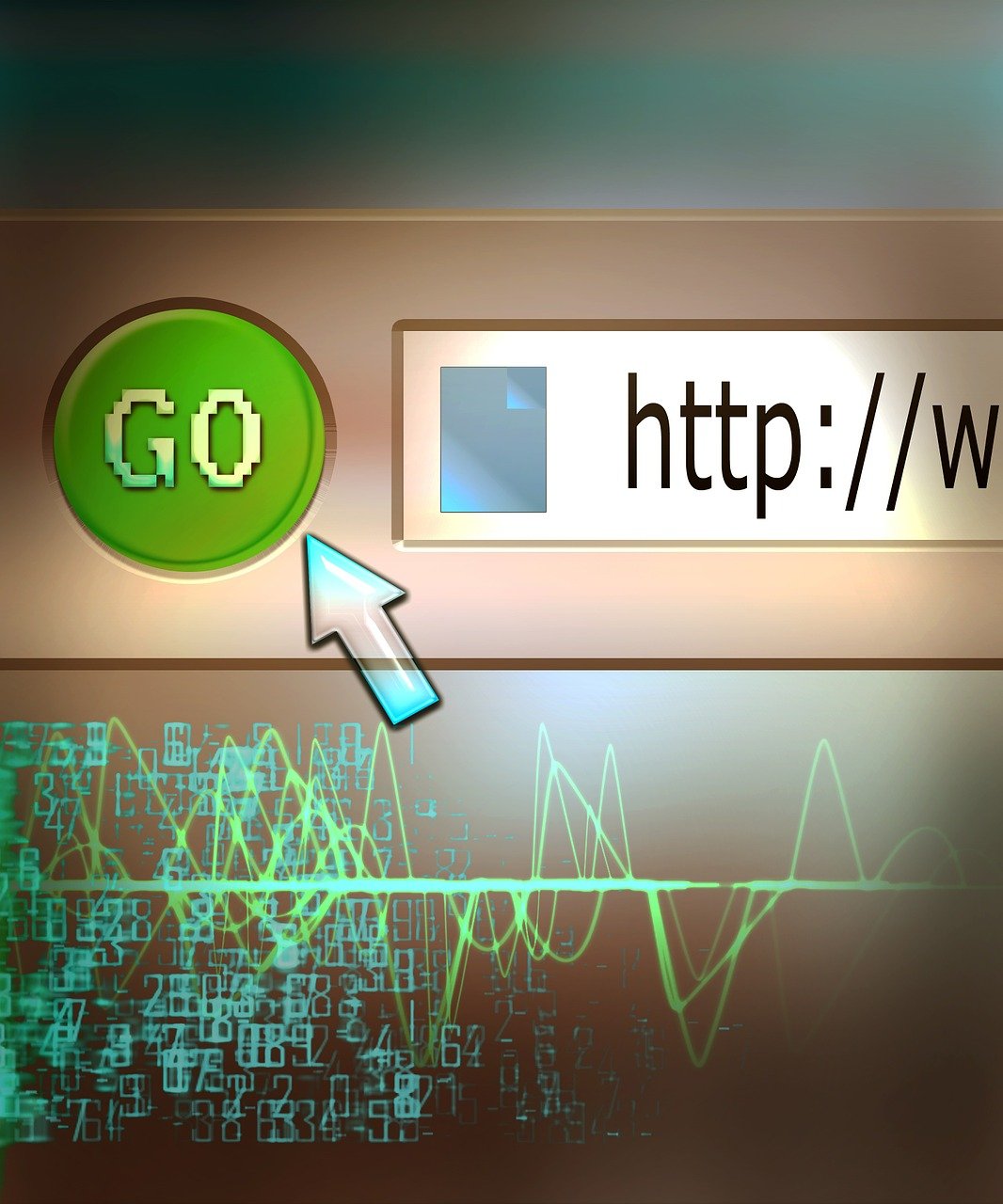In recent years, the concept of “digital twin technology” has gained significant attention across various industries, revolutionizing the way businesses operate and innovate. Essentially, digital twin technology involves creating a virtual replica of a physical object, system, or process, allowing for real-time monitoring, analysis, and optimization. As we delve into what digital twin technology truly encompasses, we’ll explore its definition, applications, and the remarkable benefits it offers. Whether it’s enhancing manufacturing processes, streamlining healthcare services, or optimizing smart cities, digital twin technology stands at the forefront of digital transformation, promising a future of unprecedented possibilities.
Let’s uncover the fundamentals and transformative potential of digital twin technology.
Defining Digital Twin Technology
Digital twin technology, at its core, refers to the creation of a virtual replica of a physical object, system, or process, which is used to simulate, analyze, and optimize its real-world counterpart. Unlike mere simulations, digital twins are continuously updated with real-time data, enabling a more dynamic and accurate reflection of the physical world.
A digital twin is composed of three main elements: the physical asset, the virtual replica, and the data that connects the two. This data can encompass a variety of information, including sensor data, historical performance, and predictive analytics. Using this data, digital twins offer a comprehensive perspective that allows for extensive experimentation and optimization without disrupting the actual physical object or system.
Key Elements of Digital Twin Technology:
- Physical Asset: This could be any tangible entity ranging from manufacturing equipment, medical devices, buildings, to entire smart cities.
- Virtual Replica: Utilizing advanced modeling tools and software, the physical asset is replicated in a virtual environment. The fidelity of this replica can vary from basic 3D models to complex, high-fidelity representations depending on the requirements.
- Data Integration: The seamless transmission of real-time data from sensors embedded in the physical asset to the virtual twin. This data flow is crucial for maintaining an up-to-date and accurate twin representation.
Core Technologies Enabling Digital Twins:
- Internet of Things (IoT): IoT sensors and devices play a pivotal role in capturing real-time data from physical assets. This continuous stream of data is what fuels the dynamic nature of digital twins.
- Artificial Intelligence (AI) and Machine Learning (ML): AI and ML algorithms process the vast amounts of data collected, enabling predictive analytics and optimization strategies. These technologies help in making sense of the data and providing actionable insights.
- Cloud Computing: The vast computational resources of the cloud are often leveraged to process, store, and analyze the massive data sets involved in digital twins. Cloud platforms like AWS IoT TwinMaker, Microsoft Azure Digital Twins, and IBM Digital Twin Exchange offer robust frameworks for developing and managing digital twin solutions (Microsoft Azure Digital Twins Documentation, AWS IoT TwinMaker Documentation, IBM Digital Twin Exchange).
Interoperability and Standards:
To achieve a functional digital twin, data from diverse sources must be integrated seamlessly. Interoperability between different systems and adherence to standards like ISO 23247 (Digital Twin Framework for Manufacturing) is critical. These standards ensure that data exchange between different parts of the digital twin ecosystem is coherent, which is vital for its overall efficacy.
Examples in Practice:
- Manufacturing: General Electric (GE) uses digital twins to optimize the operation and maintenance of their jet engines, achieving significant reductions in downtime and maintenance costs.
- Healthcare: Siemens Healthineers deploys digital twin models for improving the precision of medical imaging devices, leading to more accurate diagnostics and treatments.
By defining digital twin technology as a framework that interconnects the physical and digital worlds through real-time data, we can unlock unprecedented levels of insight and efficiency across various industries. This continuous feedback loop between the physical object and its digital counterpart exemplifies the transformative potential of this technology.
Key Components of Digital Twin Architecture
A structured and effective digital twin architecture integrates various components to create a comprehensive, real-time virtual representation of a physical asset, system, or process. Here are the key components that form the backbone of digital twin architecture:
Physical Asset
The foundational component of any digital twin is the physical asset itself. This could be anything from a machine on a manufacturing floor to an entire building or city infrastructure. The physical asset is equipped with sensors and actuators that capture real-time data, enabling the digital twin to reflect the current state of the asset accurately.
Data Acquisition and Integration Layer
This layer handles the collection and integration of data from various sources. Sensors, IoT devices, and other data collection mechanisms gather real-time data, which is then integrated using middleware and APIs. Effective data integration solutions ensure seamless communication between disparate data sources and the digital twin framework. For example, Microsoft’s IoT Hub and AWS IoT Core are popular platforms that offer robust data acquisition capabilities (source).
Data Storage
Data collected from the physical asset needs to be stored efficiently and securely. Cloud platforms such as AWS, Azure, and Google Cloud provide scalable storage solutions specifically designed for large volumes of IoT data. These platforms typically offer services that support real-time ingestion, processing, and long-term storage of data, such as Azure Data Lake and AWS S3.
Simulation and Modeling
To create a digital replica, it is crucial to employ simulation and modeling techniques. Physics-based models, machine learning algorithms, and statistical techniques are utilized to simulate the behavior and performance of the physical asset under various conditions. For example, Siemens’ Simcenter offers advanced simulation solutions that incorporate both physics-based and data-driven models (source).
Analytics and Insights
Advanced analytics play a pivotal role in extracting actionable insights from the data. This component leverages techniques such as predictive analytics, anomaly detection, and optimization algorithms to analyze the data and provide actionable insights. Platforms like IBM’s Maximo and SAS Analytics allow users to design custom analytics workflows to monitor asset health and predict future issues (source).
User Interface
The user interface (UI) provides end-users with a means to interact with the digital twin. This often involves dashboards, visualization tools, and AR/VR interfaces that present real-time data, simulations, and analytics in an intuitive manner. Tools like Microsoft Power BI and Tableau can be integrated to create customizable dashboards that provide a comprehensive view of the digital twin (source).
Feedback and Control
The feedback and control mechanisms enable the digital twin to implement changes in the physical asset based on the insights gained. This involves closed-loop control systems where data from the digital twin can trigger actuators to adjust the physical asset’s operation. This component is essential for real-time optimization and automation.
Security and Compliance
Given the volume and sensitivity of data involved, security and compliance are critical components. The architecture must incorporate robust encryption, access control, and compliance monitoring to safeguard data integrity and privacy. Leading cloud providers offer integrated security services, such as AWS Identity and Access Management (IAM) and Azure Active Directory, to ensure secure and compliant operations (source).
Understanding and implementing these components effectively is paramount to achieving a reliable and efficient digital twin architecture that can drive significant improvements in operational efficiency, predictive maintenance, and strategic decision-making.
Applications of Digital Twin Technology Across Industries
From its origin in aerospace to its modern applications across diverse sectors, digital twin technology has revolutionized how industries manage and optimize their operations. Here’s a deep dive into some of the most compelling applications of digital twin technology across various industries:
Digital Twin in Manufacturing
In the manufacturing realm, digital twins serve as a bridge between the physical and digital worlds, enabling real-time monitoring and advanced analytics of everything from machinery to complete assembly lines. By creating precise digital replicas of physical assets, manufacturers can simulate production processes, forecast maintenance needs, and optimize resource usage. This leads to reduced downtime, enhanced product quality, and increased overall efficiency. For instance, Siemens’ use of digital twin technology in its Amberg Electronics Plant has resulted in a significant boost in productivity and quality assurance.
Digital Twin in Healthcare
Healthcare has seen substantial benefits from digital twin technology, particularly in patient care and medical research. By modeling the biological systems of a patient, doctors can customize treatment plans, simulate surgical procedures, and predict the outcomes of interventions with greater accuracy. One prominent example is Philips’ digital twin for predicting and enhancing patient outcomes in heart surgeries. Furthermore, digital twins aid in drug development by replicating human organ functions to better understand drug interactions and side effects without the need for extensive clinical trials.
Digital Twin in Construction
The construction industry leverages digital twins for various stages of project development, from design to completion. Digital twins enable architects and engineers to visualize building structures, assess structural integrity, and monitor ongoing construction processes. This improves accuracy in planning, reduces costs, and minimizes risks associated with large projects. Examples include the General Electric (GE) digital twin applications in smart building designs and urban planning initiatives.
Digital Twin in IoT
The Internet of Things (IoT) synergizes exceptionally well with digital twin technology. By employing sensors and connected devices, digital twins can monitor real-time data and model the behavior of physical assets. This results in actionable insights for predictive maintenance, performance optimization, and operational efficiency. Smart cities, for instance, utilize digital twins to manage utilities, transportation systems, and public services efficiently. A notable example is the city of Singapore, which utilizes a comprehensive digital twin to optimize urban planning and improve the quality of life for its citizens.
Digital Twin in Transportation
In the transportation sector, digital twins help manage and optimize key elements of logistics and vehicle management. From simulating traffic flow and reducing congestion to managing fleet operations and ensuring vehicle maintenance, digital twins provide significant value. Major automotive companies like Tesla utilize digital twin technology for the continuous improvement of their vehicles through seamless software updates and real-time performance monitoring.
Digital Twin in Smart Cities
Smart cities represent an advanced implementation of digital twin technology, where comprehensive digital replicas of urban environments are created to monitor and optimize city operations. This includes everything from waste management and energy consumption to traffic flow and emergency response. Cities like Copenhagen and Helsinki are already leveraging digital twin solutions to enhance efficiency, sustainability, and overall quality of urban life.
For a deeper understanding of specific implementations and their technical foundations, you can refer to detailed documentation and case studies found on platforms like Siemens’ official digital twin resources or GE’s digital twin solutions documentation.
These applications underscore the transformative potential of digital twin technology across various sectors. By bridging the gap between the physical and digital realms, digital twins enable enhanced decision-making, operational efficiency, and strategic foresight in increasingly complex environments.
Digital Twin vs. Simulation: Understanding the Differences
When comparing digital twin technology to traditional simulation methodologies, it’s crucial to recognize the fundamental differences between the two, despite sharing certain overlapping functionalities. Here’s a detailed analysis to grasp the nuances between digital twin vs. simulation.
Digital Twin vs. Simulation: Understanding the Differences
- Real-Time Data Integration:
- Digital Twin:
Digital twin technology stands out due to its ability to integrate real-time data from physical assets. It continuously receives and processes data through IoT sensors, providing a dynamic, live representation of the underlying physical object. This real-time update capability enables predictive analytics and ongoing adjustments. - Simulation:
Traditional simulations typically rely on static or predefined data sets to model particular scenarios or behaviors in a system. Simulations run based on initial conditions and parameters but do not dynamically update with real-time data.
- Digital Twin:
- Interactivity and Feedback Loops:
- Digital Twin:
Interactivity and bidirectional feedback are hallmarks of digital twins. Changes in the physical asset instantaneously reflect in the digital model, and vice versa, facilitating advanced control and monitoring capabilities. This real-time feedback loop is crucial in the digital twin architecture. - Simulation:
Simulations often run in a closed environment without real-time interactivity. They are typically used to foresee potential outcomes based on varying input parameters and lack the ongoing interaction with the physical counterpart.
- Digital Twin:
- Scope and Application:
- Digital Twin:
The scope of a digital twin spans the entire lifecycle of the asset it represents—from design through production to service and decommissioning. Digital twins are versatile and utilized in comprehensive applications such as smart cities, healthcare monitoring, and manufacturing process optimization. - Simulation:
Simulation is often limited to specific stages or scenarios within the lifecycle. For example, simulations might be used in the design phase to test performance under various conditions or in training environments to project potential responses without the depth of ongoing lifecycle integration.
- Digital Twin:
- Complexity and Detail:
- Digital Twin:
Digital twins are intricate and detailed models that replicate both the structure and behavior of physical systems in high fidelity. They encompass more complex scenarios by leveraging AI and machine learning algorithms to predict future states and optimize performance continuously. - Simulation:
While simulations can be detailed, they often simplify certain elements to achieve computational feasibility. Simulations may not capture every nuance of the physical system they are modeling and generally provide a higher-level overview.
- Digital Twin:
- Use of AI and Machine Learning:
- Digital Twin:
Integration with AI and machine learning is a distinct advantage of digital twins, enabling advanced analytics and automated decision-making. These technologies utilize historical and real-time data to enhance predictive maintenance, optimize operations, and improve asset management. - Simulation:
Though simulations can incorporate AI and machine learning elements, they traditionally do not focus extensively on these aspects. When they do, simulations tend to be siloed applications rather than continuously learning systems.
- Digital Twin:
Example Illustration
Consider the deployment in a manufacturing setting:
- Digital Twin in Manufacturing:
A digital twin of a production line dynamically reflects changes in machine status, product throughput, and environmental conditions. It continuously integrates data from IoT sensors and analytics, presenting an up-to-date model that can predict machine failures, optimize workflows, and instantly adapt to production changes. - Simulation in Manufacturing:
A simulation of the same production line might analyze the expected outputs given varying machine speeds or workloads. However, it would not adjust dynamically to real-time data and would be used primarily to study and plan rather than to monitor and control in real-time.
Understanding these differences helps in selecting the appropriate technology for specific use cases, enhancing your ability to develop advanced industry solutions.
For more details, refer to the Digital Twin Integration Documentation and Simulation Software Guidelines.
Benefits of Implementing Digital Twin Technology
Implementing digital twin technology can lead to significant benefits across various sectors. By creating a virtual replica of physical assets, organizations can optimize their operations, enhance decision-making processes, and drive innovation. Here are some of the key benefits of implementing digital twin technology:
- Improved Operational Efficiency:
Digital twin technology helps monitor real-time performance data and predictive analytics, providing insights into the functioning of physical assets. This allows for proactive maintenance, reducing downtime and operational costs. For instance, by utilizing digital twins in manufacturing, companies can predict equipment failures and schedule maintenance before the failure occurs, thus minimizing production interruptions.Example: GE Aviation uses digital twins to monitor and predict the health of its jet engines, improving engine performance and reducing maintenance costs. source
- Enhanced Product Development:
Digital twins allow for virtual testing and simulation of products, accelerating the R&D process. Engineers can explore different design options and foresee potential problems before physical prototypes are built. This not only shortens the development cycle but also leads to more innovative and higher-quality products. - Cost Reduction:
By identifying inefficiencies and potential issues early in the process, digital twins help in reducing costs associated with material wastage, labor, and product recalls. For instance, in construction, digital twins can be used to simulate building operations and identify design flaws in the early stages of planning, saving monumental costs associated with post-construction modifications. - Better Decision-Making:
With real-time and historical data analytics, digital twins provide a comprehensive view of asset performance and health. Decision-makers can leverage these insights for strategic planning and informed decisions. For example, in smart cities, digital twins can simulate various scenarios such as traffic management or energy usage, helping city planners make evidence-based decisions that enhance urban living conditions. - Predictive Maintenance:
By continually assessing and comparing the current state of physical assets to their virtual models, digital twins can predict when maintenance is required. This transition from reactive to predictive maintenance avoids unexpected failures and extends the lifespan of equipment.Example: Siemens deployed digital twins to predict and prevent wind turbine failures, enhancing energy output and reducing maintenance costs. source
- Improved Supply Chain Management:
Integrated digital twin solutions can track and optimize entire supply chains. By modeling the supply chain’s end-to-end process, businesses can anticipate disruptions and adjust production schedules, inventory levels, and logistics plans accordingly. This agility enhances the overall responsiveness and efficiency of supply chain operations. - Boosted Customer Satisfaction:
The insights gained from digital twins can be used to enhance customer experiences. In transportation, for example, real-time monitoring and predictive analytics can ensure vehicle availability and reliability, resulting in improved service levels and customer satisfaction. - Enhanced Resource Management:
Digital twins facilitate better resource management by enabling the efficient use of materials, energy, and personnel. Smart resource allocation based on real-time data insights can significantly reduce waste and improve sustainability efforts.
Incorporating digital twin technology into business operations can therefore provide a considerable competitive edge, allowing for more efficient, cost-effective, and innovative processes. By leveraging advanced simulation and real-time data analytics, companies can turn theoretical benefits into practical advantages that drive growth and performance improvement.
Challenges and Solutions in Digital Twin Implementation
Implementing digital twin technology poses several unique challenges, which can complicate its adoption despite the clear advantages it offers. Addressing these challenges requires a thorough understanding of both the technology itself and the specific needs of the business or industry in which it is being implemented.
Data Integration Complexity
One of the foremost challenges is the complexity of data integration. Digital twins require data from a multitude of sources—sensors, databases, and user inputs, among others. The data needs to be harmonized into a single, coherent dataset that accurately reflects the physical asset or process. This requires robust data governance frameworks, the standardization of data formats, and the implementation of protocols for seamless data transfer.
Solution: The use of middleware and advanced APIs can facilitate data integration. Platforms like Apache Kafka for real-time data streaming or Siemens’ MindSphere offer robust solutions for industrial data integration. Detailed documentation on implementing such tools can be found here and here.
Scalability Issues
Scalability is another significant challenge. As more assets are added to a digital twin environment, the volume of data grows exponentially. Ensuring that the system can scale without degradation in performance is difficult but crucial.
Solution: Cloud computing platforms like AWS IoT Core or Microsoft Azure Digital Twins are designed to handle such scalability challenges. AWS IoT Core provides a robust infrastructure for securely connecting IoT devices to the cloud and managing them efficiently. Details on AWS IoT Core can be accessed here. For Azure Digital Twins, you can refer to Microsoft’s documentation.
Real-time Data Processing
Real-time data processing and analytics are vital for the effective functioning of digital twins. The computational power needed to analyze data in real-time and run simulations can be enormous.
Solution: Implementing edge computing can mitigate this issue by processing data closer to the source, thus reducing latency. NVIDIA’s Jetson platform is an excellent example of edge computing for real-time data processing. Further information can be found here.
Cybersecurity Concerns
The nature of digital twins involves the continuous exchange of data between physical and digital spaces, making it a ripe target for cyber-attacks. Data breaches could compromise not just system integrity but also sensitive informational assets.
Solution: Strong cybersecurity measures like encryption, role-based access control, and the integration of AI for threat detection are imperative. The NIST Cybersecurity Framework offers a comprehensive guide for organizations to improve their cybersecurity posture. You can read more about it here.
Skill Gap
The implementation of digital twin technology often requires specialized skills that may not exist within the current workforce. Skills in IoT, machine learning, data analytics, and domain-specific knowledge are imperative.
Solution: Collaborating with academic institutions for targeted training programs or partnering with experienced vendors can bridge this skills gap. Udacity’s Nanodegree programs for IoT and data analytics are excellent resources for upskilling the workforce. More details can be found here.
Addressing these challenges effectively can significantly boost the likelihood of success in digital twin implementation, thus leading to its myriad of benefits being realized.
Future Trends in Digital Twin Technology
Looking ahead, several emerging trends suggest that digital twin technology is poised for significant evolution and transformative impacts across industries. One noteworthy trend underscores the convergence of digital twin and AI technologies. This synergy promises to enhance predictive analytics capabilities, enabling more accurate and proactive decision-making. For example, incorporating AI algorithms within digital twins can support more sophisticated anomaly detection in manufacturing, leading to heightened operational efficiency and reduced downtime.
Another burgeoning development involves digital twins in smart cities. Municipalities worldwide are beginning to invest in comprehensive digital twin systems to optimize urban planning and management. Implementing digital twin technology in smart cities can address challenges such as traffic congestion, energy consumption, and waste management. These digital replicas of urban areas enable planners to simulate and analyze potential changes in infrastructure before implementation, offering opportunities for more sustainable and efficient urban environments.
The integration of Internet of Things (IoT) technology with digital twins continues to expand. IoT devices generate vast amounts of data that feed directly into digital twin models, rendering them more dynamic and capable of real-time updates. This constant stream of data is particularly beneficial in sectors like healthcare, where real-time monitoring via digital twins can improve patient outcomes through better-informed diagnoses and personalized treatment plans.
In the realm of construction, future trends in digital twin technology are focused on lifecycle management. Digital twins are progressively being used from project inception through the maintenance phase, offering a cradle-to-grave view of construction assets. This holistic approach enables stakeholders to foresee potential issues and streamline operations through comprehensive data analysis and visualization.
Moreover, advancements in edge computing are influencing the digital twin landscape. Edge computing allows for data processing closer to the source of data generation, reducing latency and bandwidth issues that large-scale digital twin implementations might otherwise encounter. This decentralization of data processing power ensures that digital twin solutions remain agile and responsive.
As we look towards the future, we also observe increasing standardization within digital twin ecosystems. Establishing common frameworks and protocols is crucial to ensure interoperability between diverse digital twin applications and platforms. This move towards standardization will facilitate broader and more seamless adoption of digital twin technology across different sectors.
Finally, enhanced 3D visualization and immersive technologies such as augmented and virtual reality (AR/VR) are becoming integral to digital twin solutions. These technologies offer intuitive, human-centric ways to interact with and explore digital twin models, making them more accessible to non-technical stakeholders and promoting cross-functional collaboration.
For further details on digital twin technology trends and updates, referring to the comprehensive documentation and standardization efforts by organizations like the Digital Twin Consortium can provide additional insights and guidelines. This forward-looking perspective emphasizes the multifaceted growth and integration of digital twin technology, projecting its increasing relevance and application in shaping future technological landscapes.




